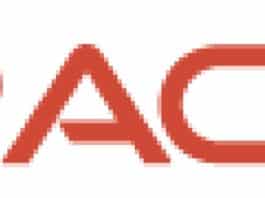LibreOffice 7.3 Community, the new major release of the volunteer-supported free office suite for desktop productivity, is available from https://www.libreoffice.org/download. Based on the LibreOffice Technology platform for personal productivity on desktop, mobile and cloud, it provides a large number of improvements targeted at users migrating from Microsoft Office to LibreOffice, or exchanging documents between the two office suites.
There are three different kinds of interoperability improvements:
- Development of new features, such as the new handling of change tracking in tables and when text is moved, which have a positive impact on interoperability with Microsoft Office documents.
- Performance improvements when opening large DOCX and XLSX/XLSM files, improved rendering speed of some complex documents, and new rendering speed improvements when using the Skia back-end introduced with LibreOffice 7.1.
- Improvements to import/export filters: DOC (greatly improved list/numbering import); DOCX (greatly improved list/numbering import; hyperlinks attached to shapes are now imported/exported; fix permission for editing; track change of paragraph style); XLSX (decreased row height for Office XLSX files; cell indent doesn’t increase on each save; fix permission for editing; better support of XLSX charts); and PPTX (fixed interactions and hyperlinks on images; fix the incorrect import/export of PPTX slide footers; fix hyperlinks on images and shapes; transparent shadow for tables).

In addition, LibreOffice’s Help has also been improved to support all users, with a particular attention for those switching from Microsoft Office: search results – which are now using FlexSearch instead of Fuzzysort for indexing – are focused on the user’s current module, while Help pages for Calc Functions have been reviewed for accuracy and completeness and linked to Calc Function wiki pages, while Help pages for the ScriptForge scripting library have been updated.
ScriptForge libraries, which make it easier to develop macros, have also been extended with various features: the addition of a new Chart service, to define charts stored in Calc sheets; a new PopupMenu service, to describe the menu to be displayed after a mouse event; an extensive option for Printer Management, with a list of fonts and printers; and a feature to export documents to PDF with full management of PDF options. The whole set of services is available with identical syntax and behavior for Python and Basic.
LibreOffice offers the highest level of compatibility in the office suite market segment, starting with native support for the OpenDocument Format (ODF) – beating proprietary formats in the areas of security and robustness – to superior support for DOCX, XLSX and PPTX files. In addition, LibreOffice provides filters for a large number of legacy document formats, to return ownership and control to users.
Microsoft files are still based on the proprietary format deprecated by ISO in 2008, and not on the ISO approved standard, so they hide a large amount of artificial complexity. This causes handling issues with LibreOffice, which defaults to a true open standard format (the OpenDocument Format).
LibreOffice 7.3 is available natively for Apple Silicon, a series of processors designed by Apple and based on the ARM architecture. The option has been added to the default ones available on the download page.
A video summarizing the top new features in LibreOffice 7.3 Community is available on YouTube: https://www.youtube.com/watch?v=Raw0LIxyoRU and PeerTube: https://peertube.opencloud.lu/w/iTavJYSS9YYvnW43anFLeC. A description of all new features is available in the Release Notes [1]
Contributors to LibreOffice 7.3 Community
LibreOffice 7.3 Community’s new features have been developed by 147 contributors: 69% of code commits are from the 49 developers employed by three companies sitting in TDF’s Advisory Board – Collabora, Red Hat and allotropia – or other organizations (including The Document Foundation), and 31% are from 98 individual volunteers.
In addition, 641 volunteers have provided localizations in 155 languages. LibreOffice 7.3 Community is released in 120 different language versions, more than any other free or proprietary software, and as such can be used in the native language (L1) by over 5.4 billion people worldwide. In addition, over 2.3 billion people speak one of those 120 languages as their second language (L2).



